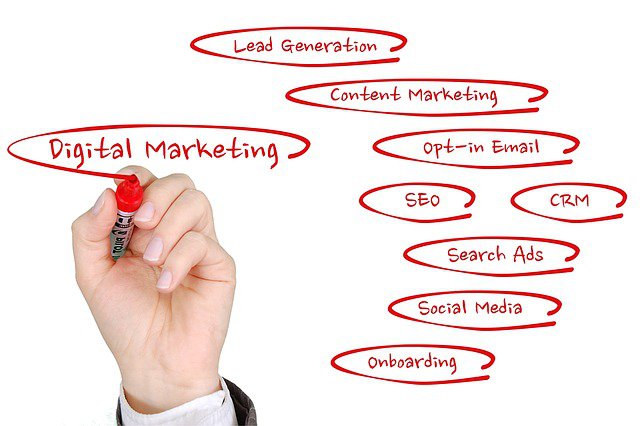
Getting to Know Your Ideal Customer: A Definitive Guide
November 14, 2019
Digital Marketing Tips: Growth Hacks for Startups
November 21, 2019The following are the digital marketing terms that you have to be familiar with to start your local business digital marketing campaign. Online digital marketing widens the reach of your local business compared to the traditional methods. Digital ads will be able to target local consumers and at the same time create brand awareness. Generating online traffic is much like driving human traffic to your physical store. For you to benefit more from your digital campaign, here is a glossary of digital advertising, marketing, and media terms that will help you go through the steps in digital marketing efficiently.
Digital Ad Elements
Digital ads may need the services of a professional graphic designer. You may also partner with a media advertising firm to create ads based on your particular brand. The following are some ad-related words that are often used in designing a creative ad campaign:
Campaign= refers to the length of time in which an advertising strategy is implemented.
Assets= refers to the creative elements of an ad which includes fonts, artwork, images, and copy (which is the wording used in the ad creation).
Creative= an advertising unit which an ad designer created. This may include multiple files as required by a particular campaign. These can include audio and video files, images, and written copy.
Banner Ad=refers to display ads and banner ads that are integrated into a site layout. Usually, it is on top of the content or embedded within it. It can also be found on the side rail of the site.
Click-Through URL= This is the destination site or landing page which the ad will direct the user to when the ad is clicked. Often this is an advertiser’s site or page with an opportunity for conversion. This can be a contact form or signup form to fill out.
Pixel= This is the unit of measurement intended for digital ad dimensions. It is often abbreviated as px. Multiple versions of an ad can come in different sizes. Some of the common sizes are 300x250px, 970×250 px, and 300x600px.
Ad Performance Measurement
It is crucial to review performance metrics for the business to evaluate the success of the campaign vis-à-vis its goals. Every business may have its own metrics of campaign targets. The most common performance metrics are the following:
CTR=abbreviation for click-through rate, which is a ratio of the number of clicks divided by the number of times the ad was displayed.
Conversion= a desired action by the user. It is tracked over time. Examples of conversion metrics are clicks and views.
Impression=refers to the number of times the ad is displayed.
Site Traffic=the total number of visits to a site or webpage. Advertising on sites with high traffic means more impressions to the ad.
Page Views=the total number of visits to a particular website page. This is usually tracked over a specific length of time.

Digital Ad Placement
Once your ad has been designed, the next element to find is the best place to feature it. The site has to have high traffic and a large following for it to give you maximum exposure; it has to be the right traffic and right audience too. A local site needs to have a targeted geographic reach, but within the site, there must be on-page placement and share of voice options.
Targeting=refers to the different ways in which your ad will be placed who sees the ad. This ensures that impressions are served to the audience that is most relevant to your business. Some of the targeting methods are based on user demographics, geo-location, and site behavior.
Look-A-Like Audience=this is a means to target and reach potential customers based on shared interests they have together with the existing customers.
Search Cookies=these are small pieces of data that are stored in a user’s computer after the user visited a site. This will track of digital behavior and preferences.
Takeover=refers to exclusive placement in a specific advertisement spot. This guarantees 100 percent of shared voice. This helps brand exposure and target market saturation.
Retargeting=these are ads displayed for users who previously visited a site or clicked on an ad. The ad is designed for users who expressed interest but have not taken any action yet. Some of these strategies are search cookies, look-a-like audiences, and social media influence.
Share of Voice (SOV)=refers to the percentage of exposure an ad receives on the pages where the particular brand is advertised.
Run of=the number of impressions guaranteed for a particular ad campaign when it is featured in rotation vis-à-vis other ads throughout the site or in a specific section of a particular site.
It’s good to know more about the terms involving local business digital marketing. For you to learn more about strategies and tips, you can check our website!







